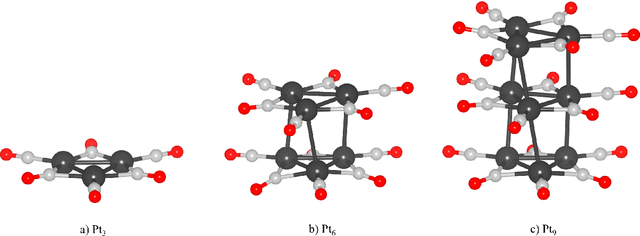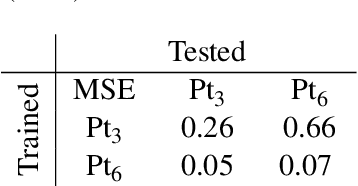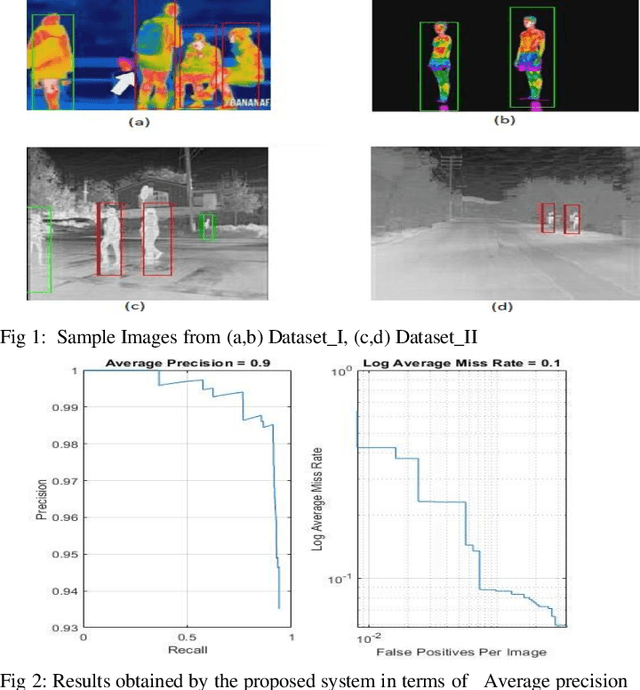Alessio Gagliardi
AUGUR, A flexible and efficient optimization algorithm for identification of optimal adsorption sites
Sep 24, 2024



Abstract:In this paper, we propose a novel flexible optimization pipeline for determining the optimal adsorption sites, named AUGUR (Aware of Uncertainty Graph Unit Regression). Our model combines graph neural networks and Gaussian processes to create a flexible, efficient, symmetry-aware, translation, and rotation-invariant predictor with inbuilt uncertainty quantification. This predictor is then used as a surrogate for a data-efficient Bayesian Optimization scheme to determine the optimal adsorption positions. This pipeline determines the optimal position of large and complicated clusters with far fewer iterations than current state-of-the-art approaches. Further, it does not rely on hand-crafted features and can be seamlessly employed on any molecule without any alterations. Additionally, the pooling properties of graphs allow for the processing of molecules of different sizes by the same model. This allows the energy prediction of computationally demanding systems by a model trained on comparatively smaller and less expensive ones
Machine-Learning-Optimized Perovskite Nanoplatelet Synthesis
Oct 18, 2022



Abstract:With the demand for renewable energy and efficient devices rapidly increasing, a need arises to find and optimize novel (nano)materials. This can be an extremely tedious process, often relying significantly on trial and error. Machine learning has emerged recently as a powerful alternative; however, most approaches require a substantial amount of data points, i.e., syntheses. Here, we merge three machine-learning models with Bayesian Optimization and are able to dramatically improve the quality of CsPbBr3 nanoplatelets (NPLs) using only approximately 200 total syntheses. The algorithm can predict the resulting PL emission maxima of the NPL dispersions based on the precursor ratios, which lead to previously unobtainable 7 and 8 ML NPLs. Aided by heuristic knowledge, the algorithm should be easily applicable to other nanocrystal syntheses and significantly help to identify interesting compositions and rapidly improve their quality.
People detection and social distancing classification in smart cities for COVID-19 by using thermal images and deep learning algorithms
Sep 10, 2022
Abstract:COVID-19 is a disease caused by severe respiratory syndrome coronavirus. It was identified in December 2019 in Wuhan, China. It has resulted in an ongoing pandemic that caused infected cases including some deaths. Coronavirus is primarily spread between people during close contact. Motivating to this notion, this research proposes an artificial intelligence system for social distancing classification of persons by using thermal images. By exploiting YOLOv2 (you look at once), a deep learning detection technique is developed for detecting and tracking people in indoor and outdoor scenarios. An algorithm is also implemented for measuring and classifying the distance between persons and automatically check if social distancing rules are respected or not. Hence, this work aims at minimizing the spread of the COVID-19 virus by evaluating if and how persons comply with social distancing rules. The proposed approach is applied to images acquired through thermal cameras, to establish a complete AI system for people tracking, social distancing classification, and body temperature monitoring. The training phase is done with two datasets captured from different thermal cameras. Ground Truth Labeler app is used for labeling the persons in the images. The achieved results show that the proposed method is suitable for the creation of a smart surveillance system in smart cities for people detection, social distancing classification, and body temperature analysis.
 Add to Chrome
Add to Chrome Add to Firefox
Add to Firefox Add to Edge
Add to Edge